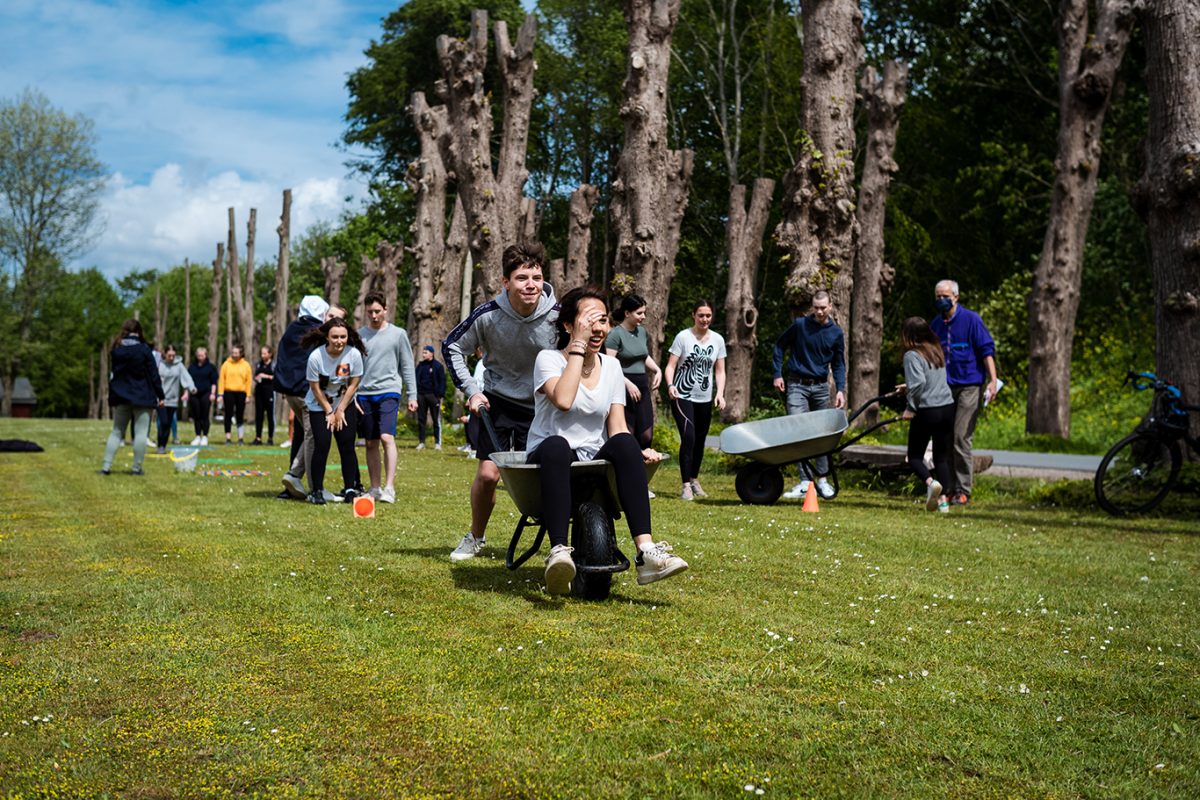Back to school: Louisenlund’s return after lockdown
Posted: 09 June 2020

Age range:
Secondary
IDEALS:
- Leadership
- Adventure
- Democracy
Discoveries
- Communication skills
- Problem solving
- Sense of responsibility
- Tenacity
- Courage
- Self-awareness
- Teamwork
- Compassion
Overview
In light of the COVID-19 pandemic, on March 13th our Head, Peter Rösner and the Senior Management Team made the decision to close the school, two weeks before the Easter holidays and send all students, who were able to do so, home. This pre-empted the decision made by the government, the following week, to close all schools (state and private) until after the Easter break.
Seven weeks later, we started the process of bringing years 7-11 back to school as residential students and effectively creating an isolation ‘bubble’ on campus.
Planning
Approximately 70 students remained in school after closure, either because their homes are in countries such as Spain, Italy or China where the COVID-19 situation was more serious than in Germany, and students whose final examinations were scheduled for the week after the holidays. Most of the Abitur Year 12 students made the decision to stay and then leave after their exams. Our final year International Baccalaureate students made the decision (they didn’t want to!) to leave school completely after their final exams were cancelled.
Whilst the remaining students took part in distance learning from home, with the support of our teachers online, we started planning for a safe return to campus and what that would look like.
We took the decision to invite all remaining students (including any international students who did return home) back to school as full-time boarders at no extra cost, the hope being that we could create our own social isolated ‘bubble’ on campus. The plan was to protect our bubble by ensuring that anyone returning to the school does so by isolating for 14 days in the boarding houses. Then once on campus there will be no exeat before the summer holidays and no visitors are allowed onto the campus.
We also formulated a simple plan to manage any suspected cases of infection on site, which is to isolate the class / house of the suspected ill person until tests can be performed to confirm trace of the virus. If the virus is confirmed then the sick person, and those they have come into contact with are to self-isolate for two weeks.
We have been in regular communication with families throughout the pandemic, informing them every step of the way. We have also been very present on Facebook with videos of various groups (staff, students, parents, SLT) explaining the situation. We have also had reporters from newspapers writing articles about how we’re doing it!
We were constantly in consultation with the local education authority and the department of health and followed their guidance and recommendations on returning to campus.
As part of our plan to return to campus we implemented a set of rules for everyone to follow including using disinfectant to regularly sanitize your space, frequent handwashing, and any off-site staff to wear face masks.
We were delighted with the positive response from all parents for students to join us for the remain of term as full-time boarders.
Details
We staggered the arrivals of our students returning to school over the course of a number of days at the beginning of May. We wanted to ensure a controlled return to school with as little risk as possible, so we communicated with students and family to make it clear on the return protocols. We questioned all students regarding their health to check for any COVID-19 symptoms (a high temperature, a new continuous cough or a loss or change to sense of smell or taste). If the students were able to confirm they were in good health, they were admitted back to school.
Students were brought to school by car, alone by parents or friends. To ensure the health and safety of all our staff and students and to avoid the potential of an outbreak at the school, all returning students spent 14 days in isolation in their boarding houses and students had their temperature taken twice a day by the house parents.
The usual house size is 10-18 students, and this has remained the same. The house adult lives in a flat attached to the house but separate.
During this period, we continued with online distance learning as the students remained in their house groups with their houseparent.
The programme was organised so that the house groups were able to take their meals, breakfast and supper in the house, lunch in the dining room, without coming into contact with the other boarding houses. They also spent their free time participating in sports, art and outdoor activities in the house group whilst observing good social distancing practices.
At the end of the 14-day isolation period we held a big party and a sports festival for the whole school. The joy and excitement among the students at being able to mix with everyone and not just their house was immense!
We are now teaching as usual with external staff coming in daily, keeping their distance and wearing masks when this is not possible. As we were able to satisfy ourselves that students are virus free and any risk of new infection is minimal, we have been able to keep our regular class size of 18 students in a class for these lessons.
Challenges
Our biggest challenge in returning to school was logistically managing the isolation process for such a large number of people to ensure that everyone remained safe and that we did not experience an outbreak.
The small supermarket in the village opened its doors for Louisenlund alone so that students and staff could shop safely.
It was a logistical nightmare which was superbly mastered by the SLT and boarding staff, but which would certainly not have been possible without the total cooperation of the students.
Impact
The response from the students was unbelievable and they really did us proud. They showed an incredible sense of responsibility and tenacity in adhering to the regulations necessary for the internal isolation. The house groups became strong team units and there was plenty of opportunity for leadership skills to develop. The impact on everyone was an immense appreciation of the freedom and the relationships, which we normally take for granted. Adults and students alike reflected on what is important and life, in general, slowed down.
Advice
- We were very lucky that the school is financially and otherwise in a very strong situation, which enabled us to carry this through. We had the space to take the day students into boarding because most of the Year 12s had left.
- Louisenlund is geographically isolated, which also helped.
- If anyone would like to speak to us, we would be happy to give advice or to answer questions.
Author: Catherine Donovan, Round Square Rep, Stiftung Louisenlund
